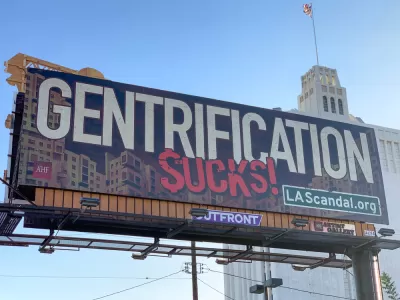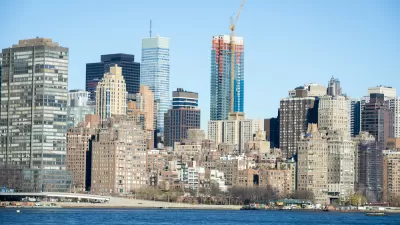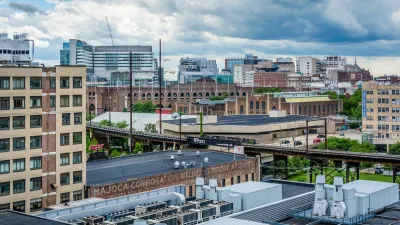Most likely, no one in particular—but policy changes can alleviate the housing shortage and prevent displacement.

As more neighborhoods and cities experience the impact of redevelopment, often termed gentrification, people seek individual culprits to pin the blame on. Whether it is the owners of the hip new coffeeshop, the developer building that new building, or the young professionals renting or buying homes in previously undesirable neighborhoods, the human need for attribution leads us to discount broader, institutional forces, according to Alan Ehrenhalt’s recent piece in Governing.
While “yuppies” or “hipsters,” whatever the term du jour is, are an easy target—“Most seriously, they raise rents and property taxes and inevitably force some poorer inhabitants to look elsewhere for lodging”—Ehrenhalt argues that “To hold them responsible for the discomforts of gentrification is essentially to blame the customer.”
Gentrification’s suppliers, Ehrenhalt writes, are indeed real estate companies and developers. “Yet for developers and landlords to be the true villains of gentrification, it would be necessary to determine that they are worse stewards than the small property owners who dominated poor neighborhoods in pre-gentrification days. There is no real evidence that this is the case.”
The real problem, according to Ehrenhalt, is the shortage of affordable housing supply and construction. “It’s the fault of an entrenched and complex system that has existed for decades and doesn’t have a perpetrator to put the finger on.”
To Ehrenhalt, “The only way to make a serious dent in the shortage of moderately priced housing is to encourage more of it without demonizing the people living comfortably under the current rules.”
While eliminating single-family zoning and permitting light density increases is one avenue for creating more housing, these policies probably won’t make a significant dent in the million of housing units needed to alleviate the current shortage. Ehrenhalt concludes, “To me, the only practical zoning solution is to stick to commercial corridors, and to build big there — tall apartment buildings, not duplexes or fourplexes” near transit lines that can accommodate families.
FULL STORY: Gentrification and the Search for Villains

Planetizen Federal Action Tracker
A weekly monitor of how Trump’s orders and actions are impacting planners and planning in America.

Congressman Proposes Bill to Rename DC Metro “Trump Train”
The Make Autorail Great Again Act would withhold federal funding to the system until the Washington Metropolitan Area Transit Authority (WMATA), rebrands as the Washington Metropolitan Authority for Greater Access (WMAGA).

The Simple Legislative Tool Transforming Vacant Downtowns
In California, Michigan and Georgia, an easy win is bringing dollars — and delight — back to city centers.

The States Losing Rural Delivery Rooms at an Alarming Pace
In some states, as few as 9% of rural hospitals still deliver babies. As a result, rising pre-term births, no adequate pre-term care and harrowing close calls are a growing reality.

The Small South Asian Republic Going all in on EVs
Thanks to one simple policy change less than five years ago, 65% of new cars in this Himalayan country are now electric.

DC Backpedals on Bike Lane Protection, Swaps Barriers for Paint
Citing aesthetic concerns, the city is removing the concrete barriers and flexposts that once separated Arizona Avenue cyclists from motor vehicles.
Urban Design for Planners 1: Software Tools
This six-course series explores essential urban design concepts using open source software and equips planners with the tools they need to participate fully in the urban design process.
Planning for Universal Design
Learn the tools for implementing Universal Design in planning regulations.
Smith Gee Studio
City of Charlotte
City of Camden Redevelopment Agency
City of Astoria
Transportation Research & Education Center (TREC) at Portland State University
US High Speed Rail Association
City of Camden Redevelopment Agency
Municipality of Princeton (NJ)





























